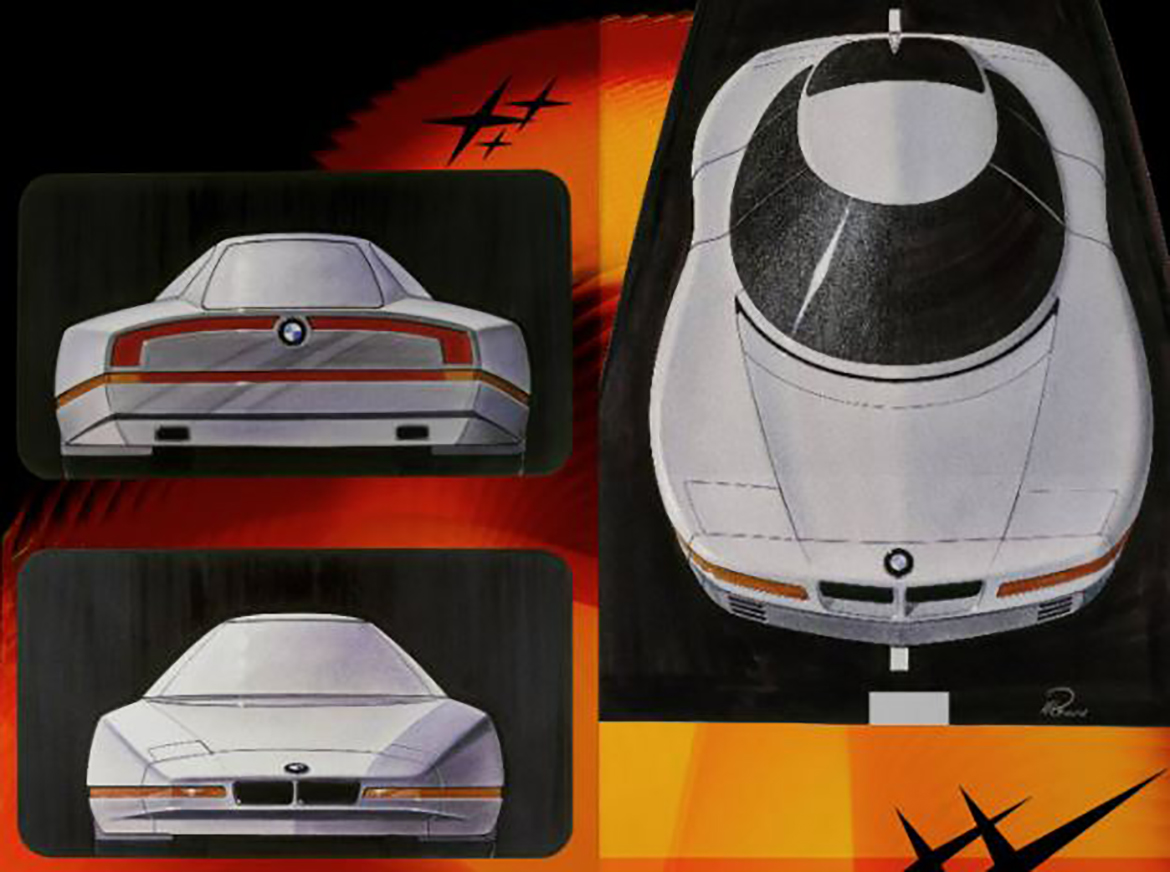The 1981 BMW AVT remains one of BMW’s most mysterious concept vehicles to this day. Little information is available on its history, but that doesn’t make it any less interesting. On the contrary, this ultra-futuristic, non-drivable prototype has a role all its own in the history of BMW design and engineering. Built for publicity purposes on the occasion of the opening of BMW’s new wind tunnel at the Ismaning/Aschheim test facility in 1980, the BMW AVT was based on recent developments in the industry with increasing emphasis on aerodynamics to reduce fuel consumption after the crises of 1974 and 1979. The full-scale model was built by BMW Design in cooperation with BMW’s aerodynamics experts, creating a truly unique “concept vehicle” which probably could not have any descendants on the road today, but nevertheless remains incredibly important for BMW’s design and engineering history.
The BMW ICE, or Integrated Concept Engineering, was designed in 2004 by California-based BMW Designworks USA, headed by Eric Goplen. The running prototype, however, was built by BMW in Munich. The best way to describe this rugged two-door sports coupe is as a Sports Activity Coupe (SAC), a compact multi-purpose vehicle perfect for the needs of the casual Californian lifestyle of the early 2000s. Mounted on four large wheels, it combined the all-wheel drive of the future BMW X5 with the interior of a BMW Z4 Roadster, encapsulated in a cross-over-inspired design that harks back to the contemporary iteration of the BMW X4 series. And indeed, looking at the BMW ICE, one can see elements that one can well imagine would be a success today; especially the sportiness of its design and cabin, masking a vehicle capable of taking anyone who dreams of California wherever they want to go.
The 1996 BMW ZBF 7 Series, on the other hand, has a much more sophisticated look. As a true luxury limousine, it heavily hints at the future exclusivity and elegance of the 7 Series and indeed ZBF stands for zukünftige BMW Familie or “future BMW family”. As a prototype, it was designed as part of a possible BMW saloon family, with legendary designer Joji Nagashima working on the 3, 5 and 7 Series. The BMW ZBF introduced technologies and features that would soon make the 7 Series a success with admirers all over the world; to name a few, we see a centrally positioned control element reminiscent of the iDrive controller introduced on the 2001 BMW 7 Series, cameras in the mirrors and flush door handles, although the latter two never found their way into series production.
The BMW 2K2 took its name from one of the most legendary BMWs ever built, the BMW 2002. In this way, the creation of this two-door, four-seat sports saloon represents a return to the BMW that preceded the 3 Series. Originally scheduled for launch in the year 2002, the BMW 2K2 was a real training session for engineers and designers working at an incredibly fast pace in small teams and tight ranks to make real production feasible. New technologies were employed and the BMW 2K2 became the first BMW ever realised in its initial design and engineering phase entirely with digital tools, including 3D forms and virtual design tools. This enabled its creators to start work in 1997 and present a viable prototype just 18 months later in 1999.













